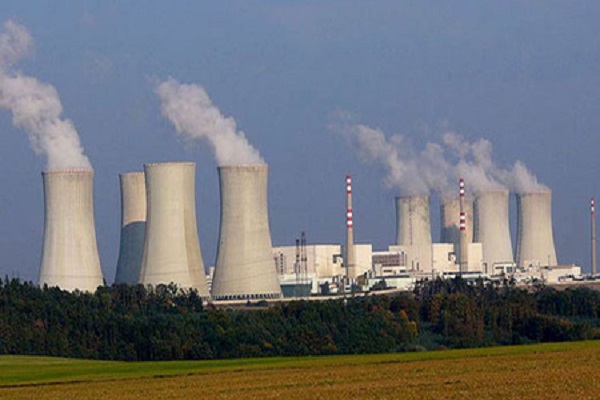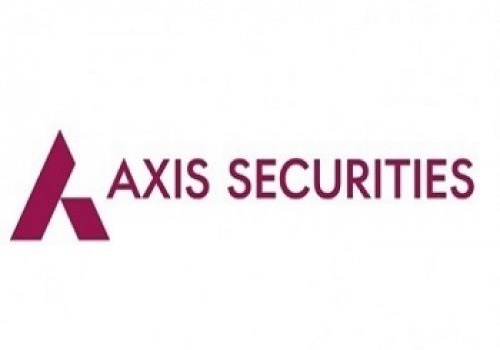Cottoncandy trading range for the day is 55370-55670 - Kedia Advisory

Gold
Gold prices witnessed a significant decline of 0.96%, settling at 94,992 amid easing trade tensions between the U.S. and China. Beijing’s decision to exempt certain American goods from its 125% tariffs reduced demand for gold as a safe-haven asset. Additionally, the U.S. dollar index neared the 100 mark, making gold more expensive for foreign buyers, while rising U.S. Treasury yields added further pressure. This led gold to retreat from its recent peak of $3,500 hit earlier in the week, as investors adjusted their positions following more moderate remarks by former President Trump regarding the Federal Reserve’s autonomy. Globally, gold market dynamics showed stark contrasts. The gold-to-silver ratio surged to its highest since 1994, excluding the pandemic period, emphasizing gold’s relative strength. In India, steep discounts of up to $80 per ounce—the highest since 2016—were offered by dealers, reflecting weak retail demand due to record prices and muted interest ahead of the Akshaya Tritiya festival. Meanwhile, Chinese premiums surged sharply to $44–$50 per ounce, the highest since February 2024, indicating robust local demand. Hong Kong and Singapore markets remained steady with minimal premiums. Technically, the gold market is experiencing long liquidation, with open interest down by 3.66% to 17,371 and prices dropping 920. Support is seen at 94,080, with a break potentially testing 93,175, while resistance is likely at 96,065, and a move above may lead to 97,145.
Trading Ideas:
* Gold trading range for the day is 93175-97145.
* Gold falls after China exempts certain U.S. goods from 125% tariffs.
* Dollar index nears 100 and U.S. Treasury yields rise amid Fed’s patient policy stance.
* Gold-to-silver ratio at highest level since 1994 (excluding the pandemic)
Silver
Silver prices declined by 1.1% to settle at 96,441, pressured by a strengthening U.S. dollar and signs of easing trade tensions between the U.S. and China. Beijing’s consideration to exempt some U.S. goods from its 125% tariffs and President Trump’s comments on progressing trade talks reduced bullion's safe-haven appeal. Additionally, the University of Michigan’s consumer sentiment index for April was revised up to 52.2 from 50.8 but remained significantly lower than March’s 57, highlighting persistent economic uncertainty and inflation concerns. On the fundamental front, the silver market is poised for its fifth consecutive annual deficit in 2025, with the gap expected to narrow by 21% to 117.6 million troy ounces due to a marginal 1% fall in demand and a 2% rise in supply. Global silver demand is forecast to hold steady at 1.2 billion ounces. Industrial demand continues to be the primary driver, projected to hit a new high by surpassing 700 million ounces, fueled by green energy applications. Technically, silver is under long liquidation, with a sharp 34.1% drop in open interest to 7,091 and a 1,070 price fall. Support lies at 95,550, and a break below could see a test of 94,660. Resistance is now at 97,480, with a potential move toward 98,520 if prices break higher.
Trading Ideas:
* Silver trading range for the day is 94660-98520.
* Silver prices fell as the dollar rose and signs of easing U.S.-China trade tensions.
* China is considering exempting some U.S. imports from its 125% tariffs.
* Earlier, U.S. President Donald Trump suggested a de-escalation of the tit-for-tat tariff battle
Crude oil
Crude oil prices edged higher by 0.3% to settle at 5,396, supported by easing trade tensions between the U.S. and China. President Trump refuted Chinese claims that no trade negotiations were ongoing, helping ease market concerns. However, volatility persisted amid conflicting statements from both sides. Meanwhile, several OPEC+ members are expected to push for increased output in June, though Kazakhstan signaled it may prioritize national interests over production cuts, casting uncertainty over the alliance’s unity. Speculative sentiment strengthened, with money managers increasing their net long positions in U.S. crude futures and options by 37,514 contracts to 113,884, according to the latest CFTC data. However, U.S. crude inventories rose by 244,000 barrels last week, contrary to expectations of a 700,000-barrel draw, marking the fourth consecutive build. This was offset by significant drops in gasoline and distillate inventories—down 4.5 million and 2.3 million barrels respectively—supporting refined product markets. On a global scale, the International Energy Agency warned that oil supply could surpass demand by 600,000 barrels per day in 2025, potentially rising to 1 million bpd if OPEC+ fails to manage output effectively. Technically, crude oil is in a short-covering phase, with open interest falling 1.77% to 13,448 while prices gained 16. Support is seen at 5,317, with a drop potentially testing 5,239, while resistance is now at 5,453, above which prices could target 5,511.
Trading Ideas:
* Crudeoil trading range for the day is 5239-5511.
* Crude oil recovered amid signs of easing trade tensions between the U.S. and China.
* OPEC+ to consider another accelerated oil output hike for June
* Money managers raised their net long U.S. crude futures and options positions in the week to April 22.
Natural gas
Natural gas prices rose by 1.37% to settle at 267.1, supported by a drop in daily output and strong liquefied natural gas (LNG) exports. Recent colder-than-usual weather earlier in the year had boosted heating demand, leaving storage levels around 1% below the seasonal norm. Output in the Lower 48 U.S. states hit a daily low of 105.1 bcfd, falling from the recent record of 108.1 bcfd on April 18. This output drop, coupled with elevated LNG export levels, has added upward pressure to prices. Despite the recent price gains, weather forecasts indicate mostly warmer-than-normal temperatures through May 10, which could curb heating demand. LSEG projects average gas demand, including exports, to gradually decline from 98.6 bcfd this week to 97.8 bcfd in two weeks. Meanwhile, U.S. utilities injected 88 bcf into storage during the week ending April 18, the largest build in nearly a year and well above expectations of 65 bcf. This increase was most pronounced in the South Central and Midwest regions, aligning with signs of strong production and reduced weather-driven demand. The U.S. Energy Information Administration projects record-breaking trends in both gas output and consumption for 2025. Dry gas production is expected to rise to 104.6 bcfd, while consumption is forecast to reach 90.7 bcfd. Technically, the market is showing signs of fresh buying interest, with open interest rising 1.28% to 13,625 and prices gaining 3.6. Natural gas has support at 261.4, with further downside potentially testing 255.7, while resistance lies at 272.2, with a breakout targeting 277.3.
Trading Ideas:
* Naturalgas trading range for the day is 255.7-277.3.
* Natural gas edged up on a drop in daily output and near-record LNG exports.
* U.S. gas output on track to hit record high in April
* U.S. gas storage about 1% below five-year average
Copper
Copper prices declined by 0.66% to settle at 855.1, pressured by a stronger U.S. dollar and signs of easing global trade tensions. U.S. President Donald Trump's remarks confirming ongoing negotiations with China, as well as progress in talks with Japan and South Korea, helped calm trade-related concerns, reducing the safe-haven appeal for metals. Despite the price drop, fundamentals suggest underlying support. Inventories monitored by the Shanghai Futures Exchange fell sharply by 32% from last Friday, indicating tightening supply in China. A shift from scrap to refined copper due to tight scrap availability is accelerating stock depletion, with the premium on SHFE's front-month contract rising to 1.2%—a sign of potential short-squeeze risks. U.S. scrap imports into China, a key supply source, dropped 16% year-on-year in Q1 to 93,215 tons. China’s refined copper output rose 8.6% year-on-year in March to 1.25 million metric tons, while Peru’s output remained flat in February, highlighting mixed global production trends. The global refined copper market showed a surplus of 61,000 metric tons in February, slightly narrowing from 90,000 tons in January, per ICSG data. China’s unwrought copper imports fell 1.4% in March and 5.2% in Q1, mainly due to high prices in the U.S., which diverted refined copper flows away from China. Technically, copper is under fresh selling pressure, with open interest increasing by 3.15% to 7,138 and prices falling 5.7. Immediate support is at 850.6, with further downside potential to 846.1, while resistance stands at 860.6, with a breakout likely to target 866.1.
Trading Ideas:
* Copper trading range for the day is 846.1-866.1.
* Copper dropped amid stronger dollar amid signs of easing global trade tensions
* US President Donald Trump affirming that negotiations with China are underway.
* Copper inventories in warehouses monitored by the Shanghai Futures Exchange fell 32% from last Friday
Zinc
Zinc prices declined by 1.53% to settle at 251.75, pressured by a stronger U.S. dollar and lingering concerns over demand outlook despite easing trade tensions between the U.S. and China. Market sentiment was initially boosted after China granted tariff exemptions on select U.S. imports and sought further product exclusions, while U.S. officials acknowledged the unsustainability of high tariffs. However, the optimism was overshadowed by Citi Research revising down its 2025 zinc price forecast to $2,630/t from $2,750/t, citing demand headwinds from renewed tariffs and geopolitical uncertainty. On the supply side, zinc fundamentals show mixed dynamics. Zinc inventories monitored by the Shanghai Futures Exchange fell sharply by 12.3% from the previous week, indicating tighter near-term supply. In China, refined zinc production jumped by nearly 14% month-on-month and over 4% year-on-year in March, signaling a strong recovery post-holiday season. Globally, zinc market dynamics remain constrained. The global market deficit narrowed to 10,000 metric tons in January from 41,100 tons in December, according to ILZSG. However, production cuts continue to influence sentiment, with Nyrstar reducing output by 25% at its Hobart smelter and expectations of slowing output from Alaska’s Red Dog Mine. Technically, the market is witnessing fresh selling pressure with a 2.84% rise in open interest to 2,536 as prices fell by 3.9. Immediate support lies at 250.3, with further downside to 248.7. Resistance is seen at 254.7, and a break above could test 257.5.
Trading Ideas:
* Zinc trading range for the day is 248.7-257.5.
* Zinc prices eased amid stronger dollar and demand uncertainty
* In March 2025, China's refined zinc production increased by nearly 14% MoM and over 4% YoY
* Zinc inventories in warehouses monitored by the Shanghai Futures Exchange fell 12.3% from last Friday
Aluminium
Aluminium prices settled lower by 0.76% at 235.2, pressured by a stronger U.S. dollar and easing trade tensions between the U.S. and China. The dollar’s rise weighed on the non-ferrous metals market, overshadowing optimism driven by supportive comments from China’s PBoC Governor Pan Gongsheng, who reiterated the central bank’s commitment to maintaining loose monetary policy. Additionally, U.S. President Donald Trump confirmed that trade talks with China were ongoing, despite Beijing's earlier statement denying any negotiations, providing some clarity on the trade front. In terms of fundamentals, global primary aluminium production rose by 2.3% year-on-year to 6.227 million tons in March, according to the International Aluminium Institute. China’s production saw a more pronounced increase, up by 2.6% year-on-year in Q1 2025, approaching the 45 million tons annual cap set in 2017. Aluminium stocks in three major Japanese ports dropped 1.2% from the previous month, suggesting tightening supply. However, Goldman Sachs downgraded its price forecast for aluminium, citing increased tariffs and weaker global growth projections for both the U.S. and China, leading to expectations of a decline to $2,000 per metric ton by Q3 2025. Technically, the market is under fresh selling pressure, evidenced by a 3.74% increase in open interest to 4,799 contracts. Immediate support for aluminium is at 234, with a potential test of 232.7 if it breaches this level. Resistance is seen at 237.6, and a break above could push prices to 239.9.
Trading Ideas:
* Aluminium trading range for the day is 232.7-239.9.
* Aluminium dropped weighed down by jump in the dollar, fuelled by the signs of easing tariff tensions.
* China's primary aluminium production grew by 2.6% year-on-year in the first quarter of 2025 - IAI
* Aluminium inventories in warehouses monitored by the Shanghai Futures Exchange fell 6.2%
Cottoncandy
Cottoncandy settled lower by 0.8% at 55,500 due to profit booking after a recent rally. The price correction came amidst revised production forecasts by the Cotton Association of India (CAI), which lowered its domestic crop estimate by 4 lakh bales to 291.30 lakh bales, mainly due to lower production in Maharashtra. This downward revision is based on inputs from state member associations, which have led to tighter supply projections. CAI also revised its total cotton supply for the season to 306.83 lakh bales, including imports of 25 lakh bales and opening stocks of 30.19 lakh bales. However, despite the tighter supply, cotton exports for the 2024-25 season are pegged at just 16 lakh bales, significantly lower than last year's 28.36 lakh bales. India’s cotton imports for the 2024-25 season are expected to more than double, reaching 33 lakh bales, driven by the reduction in domestic production. This is a substantial increase from last season’s 15.20 lakh bales. In the global context, the U.S. cotton balance sheet for 2024/25 shows reduced exports and higher ending stocks, while global textile mill usage and imports are both lower due to reduced consumption in China and Indonesia. Technically, the market is under long liquidation, with open interest falling by 0.78%. Support is seen at 55,440, and if prices dip below this level, the next support is at 55,370. Resistance is at 55,590, and a break above this level could push prices towards 55,670.
Trading Ideas:
* Cottoncandy trading range for the day is 55370-55670.
* Cotton dropped on profit booking after prices gained as CAI expects a shrinkage in the domestic crop
* CAI has estimated the total cotton supply till the end of March including the imports at 306.83 lakh bales.
* Cotton exports for the 2024-25 season are pegged at 16 lakh bales, lower by 12.36 lakh bales
* In Rajkot, a major spot market, the price ended at 25957.2 Rupees dropped by -0.21 percent.
Turmeric
Turmeric settled lower by 2.2% at 14,228, driven by weak domestic demand and sluggish export inquiries amid adequate supplies. Arrivals in key markets dropped significantly, with total arrivals at 51,732 bags, much lower than the previous session's 74,059 bags. In Sangli, one of the major turmeric markets, arrivals have fallen by around 7 lakh bags compared to last year, signaling lower-than-expected production levels. Although the area under turmeric cultivation this season has increased by 10%, reaching 3.30 lakh hectares, production is not expected to rise proportionally due to untimely rains affecting productivity. New crop yields are forecasted to be 10-15% lower than last year, with the Nanded region particularly impacted by issues like small rhizomes and crop rots. On the export front, turmeric shipments between April and January 2025 showed a positive growth of 12.93% compared to the same period last year, amounting to 148,690.78 tonnes. However, January exports saw a decline of 23.17% compared to December 2024. Meanwhile, turmeric imports for the period rose by 70.13% compared to last year, but January imports dropped significantly by 64.56% compared to the same month last year. Technically, turmeric is under fresh selling pressure, with open interest rising by 0.35%. Prices have dropped by 320, and the market is now finding support at 14,076. If the prices fall below this level, they could test 13,926. Resistance is seen at 14,418, and a move above this could push prices to 14,610.
Trading Ideas:
* Turmeric trading range for the day is 13926-14610.
* Turmeric dropped due to weak domestic demand and weak export enquiries.
* Arrivals in key markets dropped to 51,732 bags from 74,059 the previous session
* Lingering worries over slow rhizome growth and low yields limited further downside in prices.
* In Nizamabad, a major spot market, the price ended at 14889.05 Rupees dropped by -0.39 percent.
Jeera
Jeera settled lower by 2% at 22,545, pressured by comfortable supplies and subdued export interest amidst adequate existing stocks. Total arrivals in Gujarat increased to 27,300 bags (55 kg each), up from 24,000 bags in the previous session, adding downward pressure on prices. However, supply trends remain key, as near-term supplies from Rajasthan are tight due to limited arrivals, and the start of the new crop in Gujarat has been delayed by about a month. The delay in sowing in key producing regions like Gujarat and Rajasthan due to unfavourable weather conditions has further impacted the supply chain. While the production level is expected to be similar to last year due to improved crop conditions and sowing, the demand remains low, and current export business is being met from existing stocks. Farmers hold around 20 lakh bags of jeera, but only 3-4 lakh bags are expected to be traded by the season's end, leaving a carry-forward stock of approximately 16 lakh bags. Jeera exports have seen strong growth, rising by 66.98% between April and January 2025 compared to the same period in 2024. In January 2025, exports reached 17,083 tonnes, a 37.82% increase compared to January 2024. Jeera imports, however, have seen a dramatic drop, falling by 93.84% during the same period. Technically, jeera is experiencing long liquidation, with open interest decreasing by 0.05%. Prices dropped by 460, with support seen at 22,400, and below that, a further test of 22,260 could occur. Resistance is at 22,780, and a move above this level could push prices to 23,020.
Trading Ideas:
* Jeera trading range for the day is 22260-23020.
* Jeera dropped due to comfortable supplies and tepid export interest.
* Gujarat saw 27,300 bags arrive, up from 24,000 bags, exerting further downward pressure.
* Supply trends remain crucial, as near-term supplies remain tight due to limited arrivals from Rajasthan.
* In Unjha, a major spot market, the price ended at 23160.05 Rupees gained by 0.32 percent.
Views express by all participants are for information & academic purpose only. Kindly read disclaimer before referring below views























